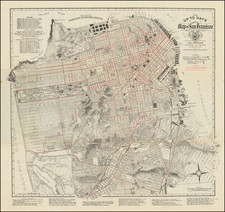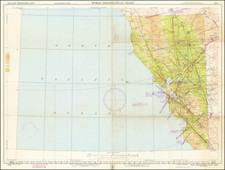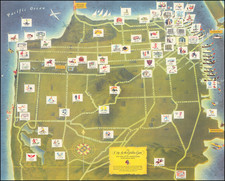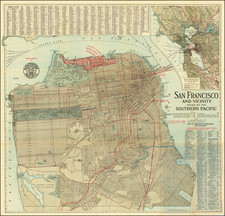Fine early depiction of San Bruno House, one of the earliest resthouses on the road between San Jose and San Francisco.
Started in 1862 by Richard Cunningham, the San Bruno House acted as the first nucleus of the modern-day community of San Bruno. While it was preceded by an earlier roadhouse in the area, the San Jose to San Francisco train settled for the San Bruno House as the location of its stop, possibly due to the other roadhouse's reputation for fleas. A small community quickly sprung up, but real growth in San Bruno would have to wait until the 20th century.
This lithograph by G.T. Brown first appeared in Moore & De Pue's Illustrated History of San Mateo County.
G.T. Brown
Grafton Tyler Brown is perhaps the first and unquestionably the most famous African American artist and lithographer to depict California and the Pacific Coast. Born in Harrisburg, Pennsylvania, February 22, 1841, Brown moved to San Francisco at the age of 20 and learned the art of lithography from C. C. Kuchel. In 1861 and again in 1864, Brown created the two earliest bird's eye views of Virginia City. At the age of 26, he established his own firm, G.T. Brown & Co.
Brown produced skillfully illustrated bank notes, labels, and maps, and stock certificates for Wells Fargo, Levi Strauss and Co., and several mining companies. His significant lithographic production, The Illustrated History of San Mateo County (1878), featured 72 views of the county's communities and ranches. Brown traveled throughout Oregon, Washington, Idaho, Wyoming, Nevada, and British Columbia (where he settled in 1882), producing maps and illustrations, including many landscape paintings.
In 1893, Brown secured employment as a draftsman at the St. Paul, Minnesota office of the U.S. Army Corps of Engineers. Sometime during his St. Paul years he married Elberta Brown. Brown's work with the Corps of Engineers ended in December 1897, after which he worked in the civil engineering department of the city of St. Paul until 1910. He died on March 3, 1918, in Nicollet County, Minnesota, bringing to a close a rich and varied career as an artist and illustrator of the American West.











![[ San Francisco Bay Entrance ] Vue de l'entrée de la Baie de San-Francisco (haute Californie.)](https://storage.googleapis.com/raremaps/img/small/102952.jpg)

![[Three Vintage Frank Kettlewell Cartoons]](https://storage.googleapis.com/raremaps/img/small/68562.jpg)
